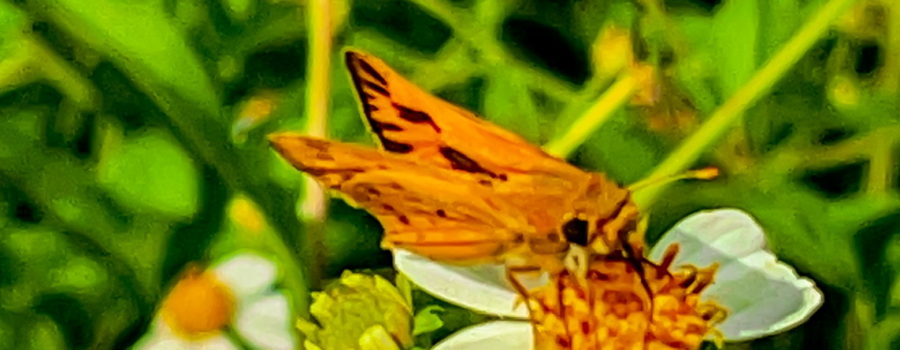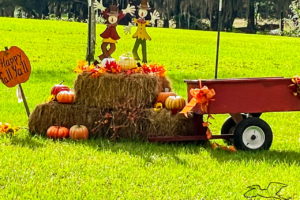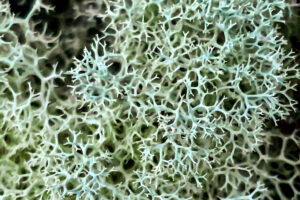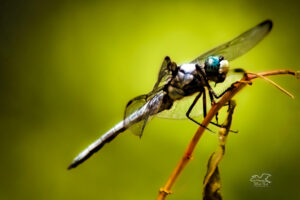The Fiery Skipper: Lawn Pest or Beautiful Pollinator?

One of the most common butterflies that lives in this area of central Florida is the fiery skipper (Hylephila phyleus). I’ve seen it frequently in my own yard, but Ive also spotted it in the woods behind my house, at my office, along the roadside is several places that I’ve stopped to take photos, and out at Henry Beck Park. As you can see, it’s a small, pretty yellowish orange to brownish butterfly, and like all skippers, it’s a fast flier that tends to dart around in a seemingly random way, making it difficult for predators (and sometimes photographers) to catch. It has a very large range in North America that includes the entire southern United States as a year long resident. In the summer migrants have been found as far north as New Brunswick, Canada. They can also be found throughout Mexico and Central America and most of South America as well as many of the islands of the West Indies.

The adult fiery skippers eat flower nectar, and will visit a large variety of plants, making them pretty good pollinators. Some of their favorites include blackjack, most asters, alfalfa, clovers, thistles, citrus, and swamp milkweed, but they are not overly particular and they will also visit many ornamental and crop plants. They are diurnal, and the females are the more active of the two sexes. Males tend to perch on low lying grasses, twigs, or branches near the good feeding grounds and wait for females to come to feed. The males are very alert and will react to almost any fluttering insect that passes by them. Females tend to be most receptive immediately after hatching from their chrysalis, and usually breed on their first day of adult life. After breeding they lay their eggs, one at a time over the course of many days. The eggs are placed on the undersides of grass leaves and receive no parental assistance.

After the eggs hatch, the larvae go through several instars or stages, during which time they feed on the leaves of the grasses where they were hatched out. They can be found on many types of wild grasses, but their favorites are mostly lawn grasses such as Bermuda grass, St. Augustine, crabgrass, and Kentucky bluegrass. The caterpillars are nocturnal and during the daylight hours they tend to roll the grass leaves around themselves and hide, preferably near the bottom of the plant to avoid predators and also lawn mowers. Most of the time there are not enough of them to cause major damage to the grasses that they inhabit, but they can cause spotty damage, and in large numbers they can become a significant lawn pest. In Hawaii, they are considered to have been introduced and are classified as an invasive species.

Hopefully, after reading this you can see why there is some controversy among people as to whether this butterfly should be considered a pest or a pollinator. I personally don’t care much how my lawn looks (and it sometimes definitely shows!), so I welcome these little guys as beautiful pollinators that are fun to watch because of their dancing flight patterns. If you are a golfer, a landscaper, or someone who prides themselves on perfect grass, then you probably disagree, and that’s okay since this is a stable species that can be found in plenty of habitats.

Do you love beautiful nature photography and artwork? Do you like to learn new things about nature and animals? If so, then join our little family by subscribing. We will never spam you or sell your email address. And it’s FREE!





Recent Comments